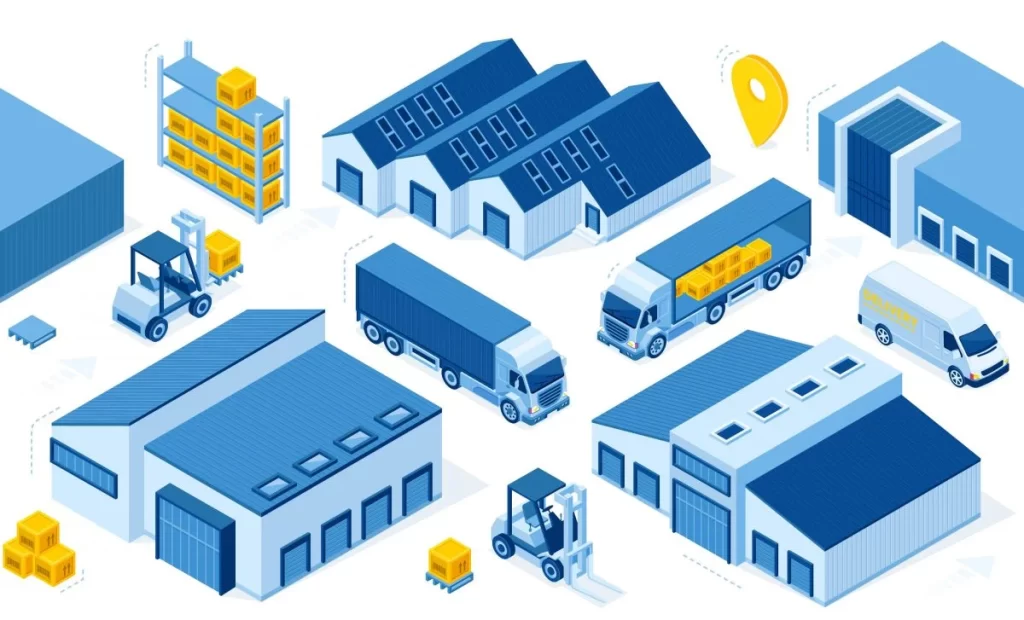Last September, Logistics Management (LM) published the article, “Yard Management Systems (YMS) Update: Optimize your yard, optimize your business”. I recommend giving it a read – it does a solid job highlighting the current state of YMS.
However, the article leaves out some key decision-making factors that companies will absolutely be considering when researching a yard management system for their own operation. In this post, we’ll break down the article’s coverage, what it gets right, and what crucial elements are missing.

What the Article Gets Right
- Yards as a Visibility Black Hole – LM nicely describes how yards have traditionally been considered a ‘black hole’ in terms of visibility, data sharing, and coordination. Manual methods of tracking still run rampant, and clipboards plague too many facilities.
- The Role of Automation in Yard Management – Automation in areas like check-in processes and dock management is a well-articulated point. YMS Automation significantly reduces manual intervention, streamlines workflows, and overall improves efficiency.
- Training and Usability Concerns – Outdated YMS solutions require extensive training – the example case study involving a parcel delivery company highlights this problem well. Putting emphasis on user-friendly interfaces is a must for any modern YMS. The software must be intuitive and easy to implement to maximize adoption and effectiveness.
- Minimizing Dwell Time and Increasing Efficiency – LM correctly identifies dwell time reduction and improvements to yard efficiency as major benefits of a YMS. Great yard management systems help optimize trailer movement and yard operations by providing real-time tracking of trailer locations and scheduling efficiencies.
- Enterprise-Wide Visibility – Large companies understand that operation-wide visibility is crucial, as is integrating their yard operations into the broader logistics and supply chain framework. As businesses seek to create seamless end-to-end operations, this will become even more emphasized. LM does a nice job of driving this point home in the article.
With the above in mind, there are some major gaps in what the article explores as far as YMS benefits, optimization opportunities, and ROI potential. Let’s take a look.
What the Article Misses
- Cost Savings and ROI Beyond Efficiency – LM touches on efficiency gains, but does not fully explore how much a YMS can drive cost savings beyond just labor efficiency. Off-hand: reduced detention fees, fuel savings from unnecessary trailer moves, optimized yard space utilization – all of these and more have a tangible impact on organizations’ bottom line.
- Sustainability and Environmental Benefits – As many companies turn their attention to reducing their carbon footprint, the environmental impact of yard inefficiencies must be discussed. This is a major concern that the article fails to address; a YMS reduces fuel consumption by minimizing unnecessary trailer moves, decreasing idle times for trucks, and contributes to lower carbon emissions.
- Safety and Compliance Benefits – Modern YMS systems help improve safety by preventing early trailer departures, managing hazardous materials more effectively, and ensuring compliance with regulations. Unfortunately, this is a significant oversight int he article given that safety incidents int he yard can lead to costly liabilities.
- Integration with TMS, WMS, and ERP Systems – While LM briefly mentions integration int he article, it does not fully delve into how a YMS works alongside these crucial systems. Effective yard management software provide real-time data that improves scheduling, shipment tracking, and overall logistics planning – not to mention the employee hours saved by reducing double data entry across disparate systems.
- Predictive Analytics and AI in Yard Management – While LM does touch on AI-enabled vision systems and RFID in the article, it does not explore the broader role of predictive analytics in yard management. AI-driven analytics can forecast congestion, recommend optimal trailer moves, and proactively identify bottlenecks before they become major issues.
- Scalability and Flexibility for Growth – The article seems to frame YMS adoption as something driven by immediate operational needs, but it does not discuss how a scalable YMS can support long-term growth. For example, a well-implemented YMS provides the flexibility to handle increased yard volumes, new locations, and evolving logistics strategies over time.
Overall the article does a commendable, if slightly narrow job outlining the core benefits of YMS – particularly in the areas of automation, visibility, and efficiency. However, like much of the current coverage surrounding yard management software, it misses the full spectrum of advantages that companies gain. Namely, cost savings, sustainability safety, integration capabilities, AI-driven decision-making, and scalability.
If you’re evaluating a YMS, it’s critical to look beyond just immediate operational improvements and consider the long-term strategic benefits. A cutting-edge YMS doesn’t merely streamline the yard, it transforms it into a proactive, data-driven powerhouse that enhances the entire supply chain. Leveraging the additional benefits outlined above will help your organization maximize the value of your investment in yard management technology.

